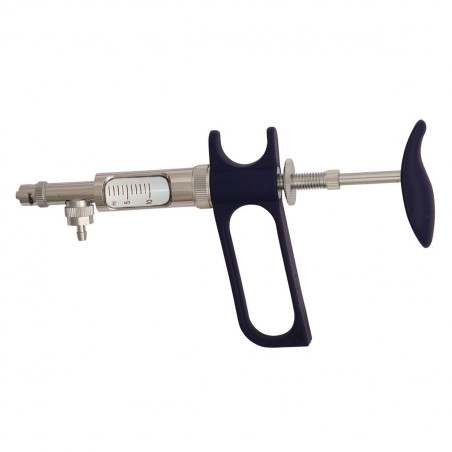Vaccination of sows against porcine circovirus type 2 (PCV-2) has been shown to be a successful prophylactic measure aimed at fighting the PCV-2-associated diseases affecting their offspring, with abundant references on the subject. However, there are few published studies that describe the benefits of vaccination for the sow itself as a result of the prevention of the PCV-2-associated reproductive disease. Likewise, blanket vaccination of sows against this pathogen is a strategy that may be of interest in field conditions, although there is no existing literature describing its effects. The fact that reproductive problems associated with PCV-2 depend on the time of infection of the foetus during pregnancy (Table 1) emphasizes the relevance of the sow's immune status during this period. In this scenario, a study was conducted aimed at exploring the benefits of blanket vaccination in sows against PCV2 on their reproductive parameters and on the infectious and immunological status of their offspring.
Table 1. Reproductive problems associated with PCV-2 depending on the time of infection of the foetus during pregnancy (adapted from Madson and Opriessnig, 2011).

| Moment of infection of the fetus during pregnancy | Consequence in reproductive parameters |
| Day 1-35 | Embryonic death Regular returns Pseudopregnancy Small litters |
| Day 35-70 | Mummified fetuses Abortions |
| Day 70-115 | Mummified fetuses Stillborn Weak piglets at birth Delayed farrowings Abortions |
The study was conducted on a conventional 1,200-sow farm located in Spain that was positive for Mycoplasma hyopneumoniae, PRRS positive stable, and negative for Aujeszky's disease. On the farm, there was no vaccination background against PCV-2 in replacement gilts or sows. PCV-2 infection was present on the farm, having been detected in the serum of sows and in umbilical cords. A total of 288 sows were included in the study and allocated to 4 experimental groups balanced by parity, PCV-2 antibody levels and insemination week: 73 sows were vaccinated prior to their artificial insemination (pre-AI) with 1 ml (IM) of a PCV-2 commercial vaccine, 72 were vaccinated at mid-pregnancy, 73 were vaccinated at the end of gestation, and 70 received saline solution to act as a negative control (NV).
Reproductive parameters were recorded, and umbilical cord blood samples were taken at the time of farrowing for the detection of PCV-2 in serum. Blood samples were later taken from 5 piglets of each sow at weaning with the aim of measuring the PCV-2 antibody levels.
Table 2. Summary of reproductive parameters.
| Group | % mummified piglets | Piglet birth weight (mean ± standard deviation) | % positive umbilical cords to PCV2 -PCR |
| V pre-AI | 1.1% | 1.63±0.39 kg | 4% |
| V mid-gestation | 1.3% | 1.67±0.38 kg | 11% |
| V end of gestation | 1.8% | 1.65±0.39 kg | 12% |
| NV | 2.2% | 1.59±0.37 kg | 24% |
| Group | Stillborn piglets | ||
| V pre-AI or mid-gestation | 4.3% | ||
| V end of gestation or NV | 5.5% | ||
V: Vaccine; NV:Non-vaccinated group
The results obtained (Table 2) showed that:
- The average birth weight of the piglets born to the 3 groups of vaccinated sows was statistically higher than that of the piglets born to the unvaccinated sows.
- The percentage of mummified piglets tended to be lower in sows vaccinated pre-AI than in non-vaccinated sows.
- The percentage of stillborn piglets tended to be lower in sows vaccinated pre-AI or at mid-gestation when compared with sows vaccinated at the end of gestation or unvaccinated.
- The closer to the farrowing that the vaccination of the sows took place, the higher the percentage of umbilical cords positive to PCV-2, with the group of unvaccinated sows obtaining the highest percentage of positive cords. This percentage was statistically lower in the group vaccinated pre-AI compared to the unvaccinated group, and it tended to be lower in the group vaccinated at mid-pregnancy compared to the unvaccinated group. This result suggests that vaccination could reduce the transplacental transmission of the PCV-2 infection from the sows to the foetuses. In addition, this effect is higher the earlier the vaccination takes place during the gestation.
- Finally, the PCV-2 antibody levels at weaning of piglets from vaccinated sows were higher than those from unvaccinated sows. This result, together with the previous one, are of special relevance for growing piglets, since the vaccination of sows reduces the pressure of PCV-2 infection from a very early age (lactation) in their offspring, as well as increasing their passive immunity
These results indicate that sow blanket vaccination against PCV-2 is a tool with potential for improving their reproductive parameters, as well as to reduce transplacental transmission of PCV-2 infection to fetuses and increase transmission of maternal antibodies against PCV-2 to their offspring.








